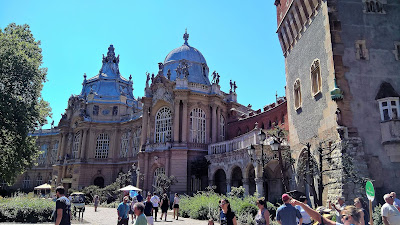The first time I can remember writing a history report was for Mr. Cole's class, when Mike Rood, Chris Crabtree, Michelle Gallahair and I were among 15 fourth graders in an advanced combination class with the same number of fifth graders.
I would sit down at the kitchen table with Mom and a stack of encyclopedias on Thursday evening so I'd have my error-free, ink-written two pages ready to turn in the next morning.
Many was the time I started writing a sentence two thirds of the way down the page only to realize I had started the wrong word, which forced me to be resourceful and find another word in the dictionary that started with the same letters or restructure the sentence. Often, it involved restructuring the sentence to use the new word.
Yes, I could have just started the page over, but that sounds a lot easier in this word processing age when to rewrite means a couple of quick keyboard strokes followed by hitting print. Handwriting neatly in ink without corrections was for many in my generation the hardest part of a report.
Admittedly, the first few reports were more Mom reading the books aloud and then telling me what to write, but she gradually left me more and more time and space to figure it out on my own.
While neither of my parents went to an academic-type university (though my dad did graduate from barber and beauty schools), they were both very intelligent and life-long learners who could hold their own in any conversation.
Education for their children was always a top priority, so they bought the prestigious World Book Encyclopedia as well as several grocery store encyclopedia sets to have in our home, which was definitely a huge advantage at the time. Looking back, I can't help but wish I had been a more dedicated student to honor their faith in me, but I've enjoyed such a wonderful life, I honestly can't say it could have turned out any better if I had tried.
These days, of course, we all have access to the internet, where the problem is not finding information but sifting what is true from what google engineers have programmed to be the most popular answers based on their personal biases or black-ops advertising.
Mom and Dad also helped my sister and me sort through that type of misinformation (albeit in different forms) by teaching us how to learn through their examples.
At the time I was writing those papers for the affable Mr. Cole and the next year for the tough-minded Mrs. Burroughs, I never thought I would voluntarily take time away from watching TV or playing sports to write those reports.
And yet, when I go on vacation, even after I tell myself that I will not get carried away with history as I did before our recent Danube River Cruise, I find myself returning home to research more about what I learned along the way.
This time, I felt compelled to write what turned out to be a multi-article report about Maria Theresa and the Habsburgs, but herein I have broken those episodes out as an overview of the region in this 300th Anniversary Year of Empress Maria Theresa. It should be noted that many of the pictures and some other information about our trip are only found in those posts.
Maria Theresa and the Habsburgs, Pt. 1
Maria Theresa and the Habsburgs, Pt. 2
Maria Theresa and the Habsburgs, Pt. 3: Prague Castle
Maria Theresa and the Habsburgs, Pt. 5: Schönbrunn Palace
Maria Theresa and the Habsburgs, Pt. 6: Pressburg
Maria Theresa and the Habsburgs, Pt. 7: Belvedere Palace
Maria Theresa and the Habsburgs, Pt. 8: From Vienna to America
Maria Theresa and the Habsburgs, Pt. 6: Pressburg
Maria Theresa and the Habsburgs, Pt. 7: Belvedere Palace
Maria Theresa and the Habsburgs, Pt. 8: From Vienna to America
 Why should you cruise on AmaWaterways?
Why should you cruise on AmaWaterways?Chex Mix to the Czech Republic? Check✅
 Confronting the Nazi Past in Linz
Confronting the Nazi Past in LinzSt. Martin's Cathedral in Bratislava and a Brief History of Slovakia
Chilling in Bratislava,Slovakia
City Park of Budapest Featuring Heroes' Square and Vajdahunad Castle
Buda and Pest
Illuminated Budapest
If you want to cruise the Danube River or experience any other part of the world, I would be happy to help you learn more about your possibilities.
"Better service leads to better trips!"





















































